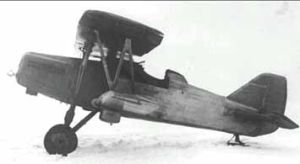| I-8 (ANT-13) | |
|---|---|
 | |
| General information | |
| Type | Fighter |
| National origin | Soviet Union |
| Manufacturer | Tupolev |
| Status | Retired |
| Number built | 1 |
| History | |
| First flight | 1930 |
The Tupolev I-8 (also known as the ANT-13) was an experimental interceptor built in the Soviet Union in the early 1930s.